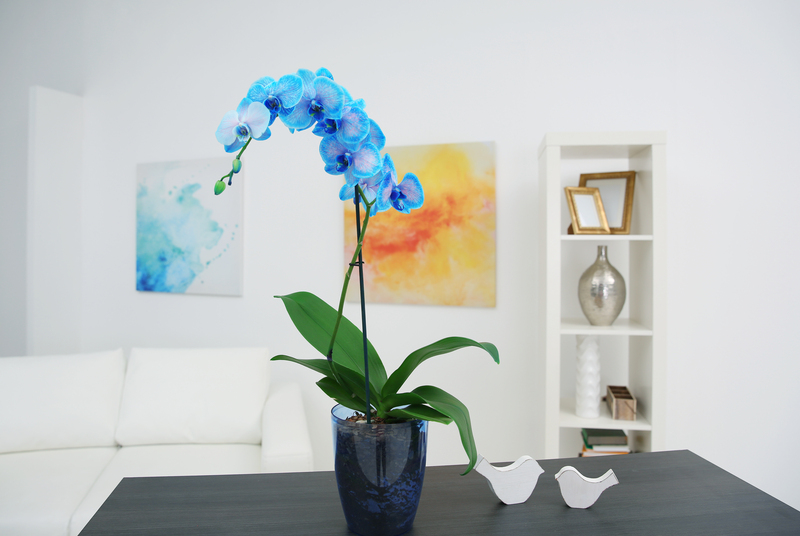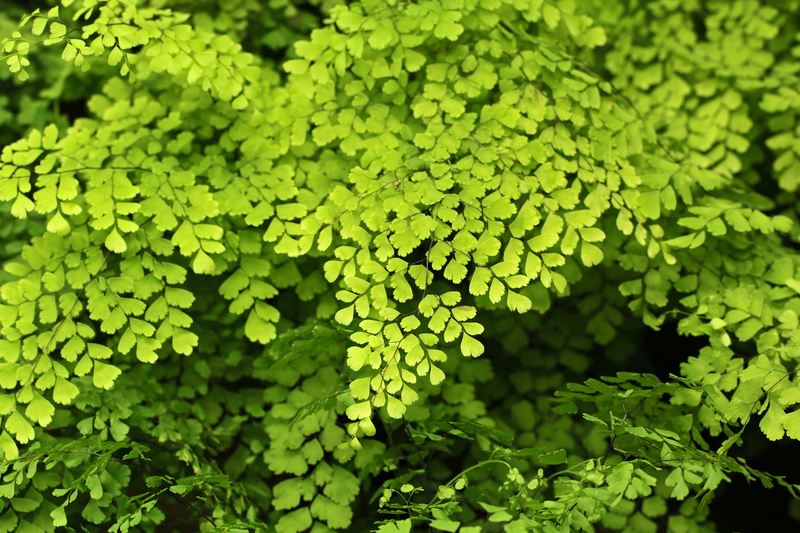Maintaining an Easy-Care Garden on a Tight Budget
Posted on 06/09/2025
Maintaining an Easy-Care Garden on a Tight Budget
Dreaming of a lush, inviting garden but worried about the time and money you'll need to invest? The good news is that a beautiful, easy-care garden is within your reach--even if you're on a tight budget. You don't need to break the bank or spend every weekend weeding and watering. In this comprehensive guide, you'll discover practical techniques, cost-saving tips, and smart plant choices for maintaining an easy-care garden on a tight budget. From clever landscaping to budget-friendly plant ideas, this article covers everything you need to nurture a low-maintenance, wallet-friendly garden.
Why Choose an Easy-Care Garden?
An easy-care garden isn't just about saving time and money--it's also about enjoying your outdoor space more. With less maintenance, you can spend more time relaxing, entertaining, or simply appreciating the beauty of nature. Whether you're a new gardener, a busy professional, or simply looking to economize, focusing on easy garden maintenance helps you achieve a thriving garden without the stress and expense.
- Save Money: Less frequent purchases of tools, fertilizers, and plants.
- Save Time: Reduced need for weeding, pruning, and watering.
- Eco-Friendly: Lower water and chemical usage benefits the environment.
- Year-Round Beauty: Well-chosen plants thrive with minimal care.

Planning Your Budget-Friendly, Low-Maintenance Garden
Before you start digging, a bit of planning will set you up for success. Follow these steps to create your perfect, low-fuss garden--without overspending.
Assess Your Space and Resources
- Take note of your garden's size, soil quality, light exposure, and climate.
- Identify existing features you can utilize, such as mature trees, fencing, or decorative rocks.
- List the tools and supplies you already own to avoid unnecessary purchases.
Set a Realistic Budget
- Estimate how much you can spend, then prioritize must-haves over nice-to-haves.
- Remember, you can always expand and improve your garden over time.
Design for Simplicity
- Opt for simple shapes for beds and pathways--they're easier and cheaper to maintain.
- Limit the variety of plants; repetition and grouping adds visual appeal and eases maintenance.
- Include some paved or mulched areas to reduce the amount of lawn or planting space needing attention.
Choosing the Right Plants
The secret to a low-maintenance, inexpensive garden is plant selection. Focus on varieties that thrive in your local conditions and require minimal upkeep--often described as "plant and forget."
Opt for Hardy, Drought-Tolerant Species
Choose plants that are native to your region, as they are adapted to your soil and climate and need less water and care. Here are some popular choices:
- Lavender: Aromatic, drought-tolerant, and thrives in poor soil.
- Sedum and succulents: Hard-wearing, water-wise ground covers.
- Daylilies and Black-eyed Susans: Perennial blooms requiring little attention.
- Ornamental grasses: Add height, texture, and year-round interest with minimal fuss.
- Herbs: Such as oregano, thyme, and rosemary--which do double duty as culinary plants!
Start from Seeds or Cuttings
- Seeds are significantly cheaper than mature plants or potted starts.
- Swap cuttings with friends and neighbors to increase your plant selection for free.
- Take advantage of end-of-season sales at local nurseries.
Reduce Your Lawn Size
Lawns are one of the most high-maintenance and expensive features of any garden. Consider replacing some or all of your grass with easy-care alternatives:
- Ground covers like creeping thyme or clover.
- Mulched beds or gravel areas for sitting or pathways.
- Wildflower meadows for a natural, colorful look.
Soil and Mulch: The Backbone of a Low-Maintenance Garden
Healthy soil and effective mulching are essential components in any budget-friendly, easy-care garden. They reduce the need to water, weed, and fertilize, saving you both money and effort.
Improve Your Soil Naturally
- Add free or low-cost organic matter such as compost, rotted leaves, or grass clippings.
- Create your own compost heap instead of buying commercial fertilizers.
- Mulch with what you have--shredded paper, straw, or wood chips help retain moisture and suppress weeds.
Benefits of Mulching
- Keeps soil moisture levels steady, reducing your watering needs.
- Prevents weeds, cutting down on your maintenance chores.
- Improves soil structure and fertility over time.
Irrigation: Watering Smarter, Not Harder
One of the biggest drains on time and money can be watering a garden, especially during dry spells. Smart watering strategies can drastically reduce your workload and expenses.
Efficient Watering Techniques
- Water early in the morning or late in the evening to minimize evaporation.
- Use soaker hoses or drip irrigation--these target the roots where it counts and save water.
- Group plants with similar water requirements together.
- Catch rainwater using barrels or large containers to water your garden for free.
Choose Plants Wisely
Again, those drought-tolerant, native plants are your best friends: they need very little watering once established.
Weed and Pest Reduction on a Budget
Weeding and pest control are two major chores for gardeners. With a few clever strategies, you can minimize both--while keeping costs down.
Simple Weed-Suppression Tips
- Keep beds densely planted--shade discourages weed germination.
- Apply mulch in a thick 2-3 inch layer to smother weeds.
- Hand-weed regularly when the soil is moist, making the task quicker and easier.
Affordable Pest Control Solutions
- Encourage beneficial insects (like ladybugs) by planting nectar-rich flowers.
- Pick off pests by hand on small plants--a quick, free solution.
- Use homemade remedies such as diluted dish soap for aphids, or sprinkle crushed eggshells around plants to deter slugs.
Repurposed, Cost-Effective Garden Features
You don't need expensive garden decor or fancy containers to create a focal point. Instead, get creative with what you have, or pick up bargains at garage sales, flea markets, or online marketplaces.
Decorating and Hardscaping on a Budget
- Use old bricks, stones, or broken concrete for attractive, rustic garden edging.
- Line pathways with pebbles, bark, or even colorful bottle caps.
- Transform old tires or buckets into planters.
- Repurpose wooden pallets as vertical gardens or compost bins.
- Hang small pots from fences, or use trellises made from bamboo or sticks for climbing plants.
Time-Saving Maintenance Tips for Easy-Care Gardens
Now that your low-maintenance garden is growing, keep it looking its best with these simple tasks that won't eat into your free time or your wallet.
- Walk through your garden weekly to quickly spot problems.
- Spend 10-15 minutes "spot weeding" rather than letting weeds take over.
- Trim plants just once or twice a season, favoring those that require little pruning.
- Deadhead flowering plants to encourage more blooms with minimal work.
- Top up mulch as needed--this remains one of the best, easiest chores for easy-care gardening.
Seasonal Easy-Care Garden Checklist
These seasonal tips will help you stay organized and on top of maintenance--while still enjoying a budget-friendly, easy-care garden.
Spring
- Start seeds indoors or directly in garden beds.
- Apply a fresh layer of mulch.
- Check irrigation and repair any leaks in hoses or watering systems.
Summer
- Monitor plants for pests or drought stress.
- Continue practical, deep watering as needed.
- Enjoy harvesting herbs and flowers--consider drying them for later use!
Autumn
- Collect leaves for compost or use as mulch.
- Plant bulbs for next year's low-maintenance color.
- Trim back perennials as they finish blooming.
Winter
- Tidy up dead plant material but leave some for wildlife habitat.
- Plan next season's improvements--think about more ways to save money and time!

Frequently Asked Questions (FAQs) on Maintaining an Affordable, Easy-Care Garden
How can I start a garden with almost no money?
Use seeds and cuttings instead of mature plants, borrow tools, and use free resources like compost from kitchen scraps. Barter with neighbors for plants or mulch, and capitalize on community resources such as seed swaps or local garden clubs.
What are the lowest maintenance plants?
Native perennials (such as daylilies, echinacea, and coreopsis) and tough ground covers (like sedum or creeping thyme) require very little care once established.
How do I keep my garden weed-free naturally?
Apply thick organic mulch, plant densely, and pull weeds by hand regularly before they set seed.
Is it possible to have a garden without regular watering?
Yes, by focusing on drought-resistant plants and improving your soil's water retention with compost and mulch, you'll greatly reduce your need to water.
What's the best way to fertilize on a budget?
Use homemade compost, diluted coffee grounds, or grass clippings. Organic matter works wonders on a shoestring budget!
Conclusion: A Garden That's Easy to Love (and Maintain!)
Maintaining an easy-care garden on a tight budget is not only possible, it is also incredibly rewarding. By focusing on smart planning, hardy plant choices, soil health, and clever DIY solutions, you can create a garden that's beautiful, sustainable, and affordable. With these low-maintenance gardening tips, you'll enjoy an inviting outdoor haven--with the extra time and money to relax and enjoy the fruits of your labor.
Ready to start your own budget-friendly, easy-care garden? Dig in, get creative, and watch your garden (and savings) grow!

